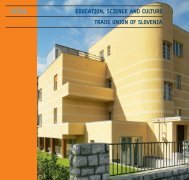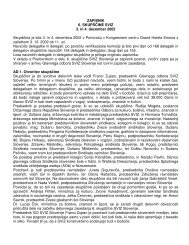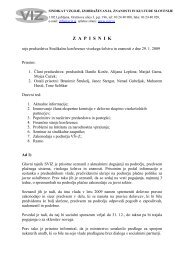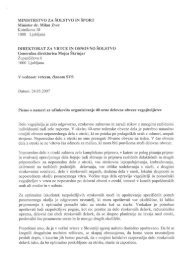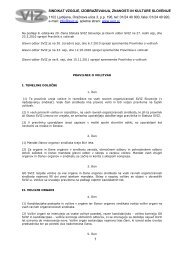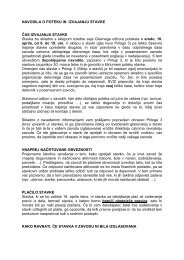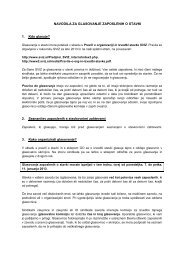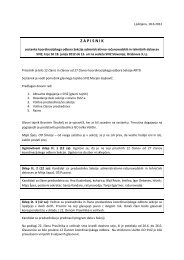You also want an ePaper? Increase the reach of your titles
YUMPU automatically turns print PDFs into web optimized ePapers that Google loves.
in the conception of the second theme, which begins with the same interval<br />
sequence (fourth-third) as the first theme, showing that Haydn was engaging<br />
with the idea of monothematicism. If the first movement is explicitly stormy<br />
the second is unusually calm – with its obviously galant quality and its focus<br />
on the strings alone it flirts with older forms. The subsequent minuet returns<br />
to the initial Minor tonality, while the stormy finale re-establishes the expressiveness<br />
of the first movement.<br />
PROGRAM / PROGRAM<br />
The next important tectonic shifts in the development of the symphony<br />
were brought about by the symphonic opus of Beethoven. Above all in the<br />
Third, Fifth and Sixth Symphonies he established entirely new standards:<br />
the symphony became an organically rounded work that demanded to be<br />
understood. It is, therefore, first necessary to break through analytically to the<br />
secrets of its construction, and then it is possible to establish links between<br />
the complex musical technique and phenomena related to a world view. At<br />
first, such an obviously in-depth attitude towards composition perplexed<br />
listeners, and then in spite of the complexity they nonetheless recognised the<br />
far-reaching scope of the composer’s ideas. Thus the audience was almost<br />
somewhat disappointed with the master’s Eighth Symphony. At the concert<br />
at which, along with a number of other works by the composer, Beethoven’s<br />
Seventh and Eighth Symphonies were performed, the audience welcomed<br />
the former with enthusiasm while the response to the latter was rather tepid.<br />
This angered Beethoven, as he was convinced that the Eighth Symphony was<br />
better than the Seventh. Listeners were no doubt surprised by the almost ‘old<br />
fashioned’ tone of the symphony, which flirts with its classical predecessors<br />
by Haydn and Mozart (instead of a scherzo Beethoven placed an ‘out-of-date’<br />
minuet in the third movement). The audience did not recognise the fact that<br />
Beethoven actually establishes a clear, almost ironic, distance towards classicism,<br />
as is demonstrated by the numerous harmonic surprises, the humorous<br />
play with rhythm (syncopation and displaced accents) and the formal surprises<br />
(in the first movement the concluding coda is 72 bars long, and in the finale<br />
the coda has 250 bars, which is almost half of the movement). That which<br />
stirred the audience up most, however, was the humorous second movement,<br />
which, according to anecdotal evidence whose reliability cannot be entirely<br />
confirmed, Beethoven wrote for Johann Nepomuk Mälzel, the inventor of the<br />
metronome. It is true that the movement pulses in a mechanical rhythm that<br />
is reminiscent of the ticking of a clock or metronome, but above this rhythmic<br />
monotony unfolds an attractive tune.<br />
124<br />
In spite of the fact that it often seems that the opus of Russian romantic<br />
composer Pyotr Ilyich Tchaikovsky is marked above all by powerful emotion,<br />
it is important to realise that the composer actually admired the music<br />
of Mozart. It was precisely a love of Mozart that inspired Tchaikovsky to<br />
compose works in which one can feel a certain playful classical spirit. This<br />
is true in particular of the pantomime from the opera The Queen of Spades,<br />
the Fourth Orchestral Suite, also known as the ‘Mozartiana’, and not least<br />
of the Variations on a Rococo Theme. The latter was written by Tchaikovsky



